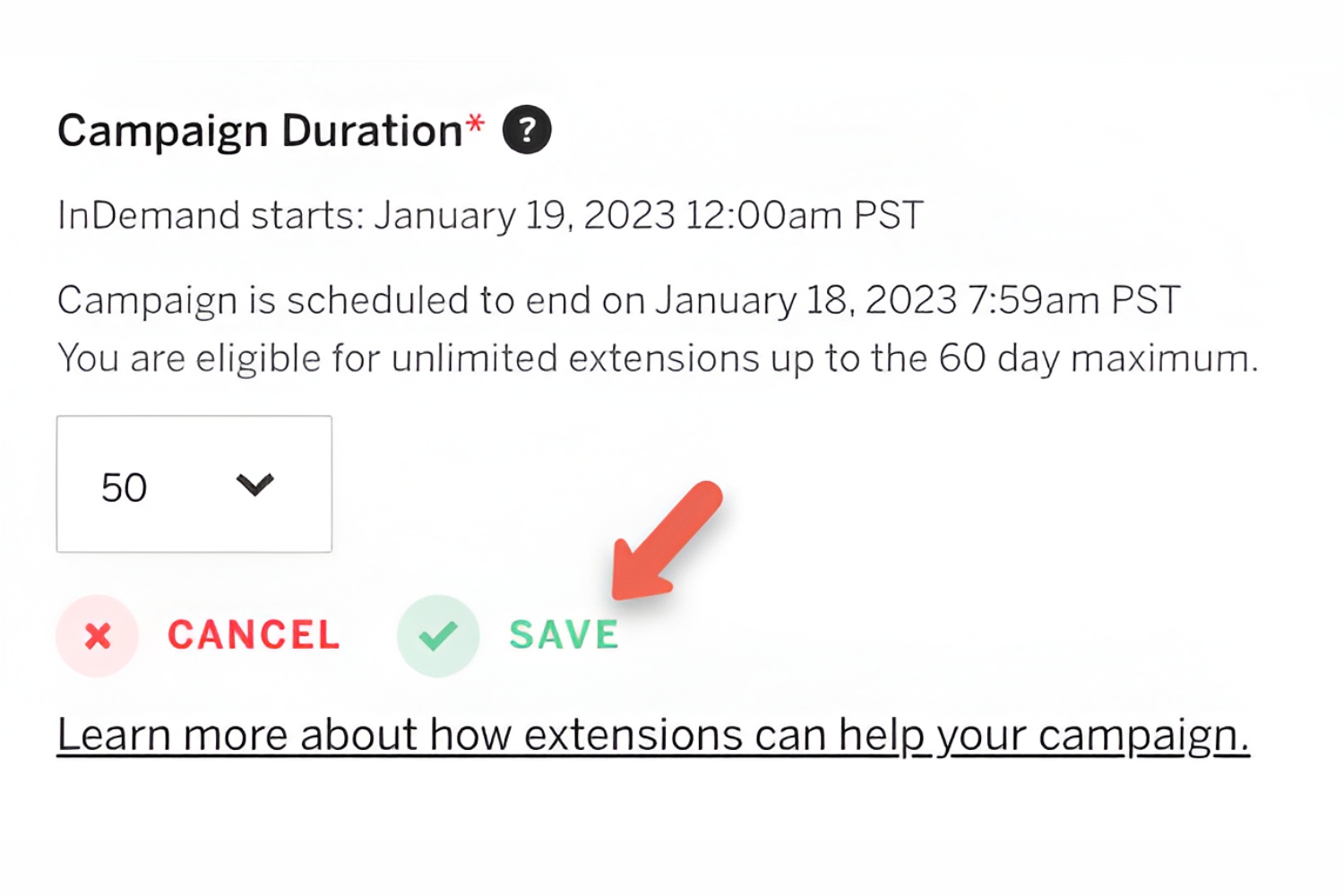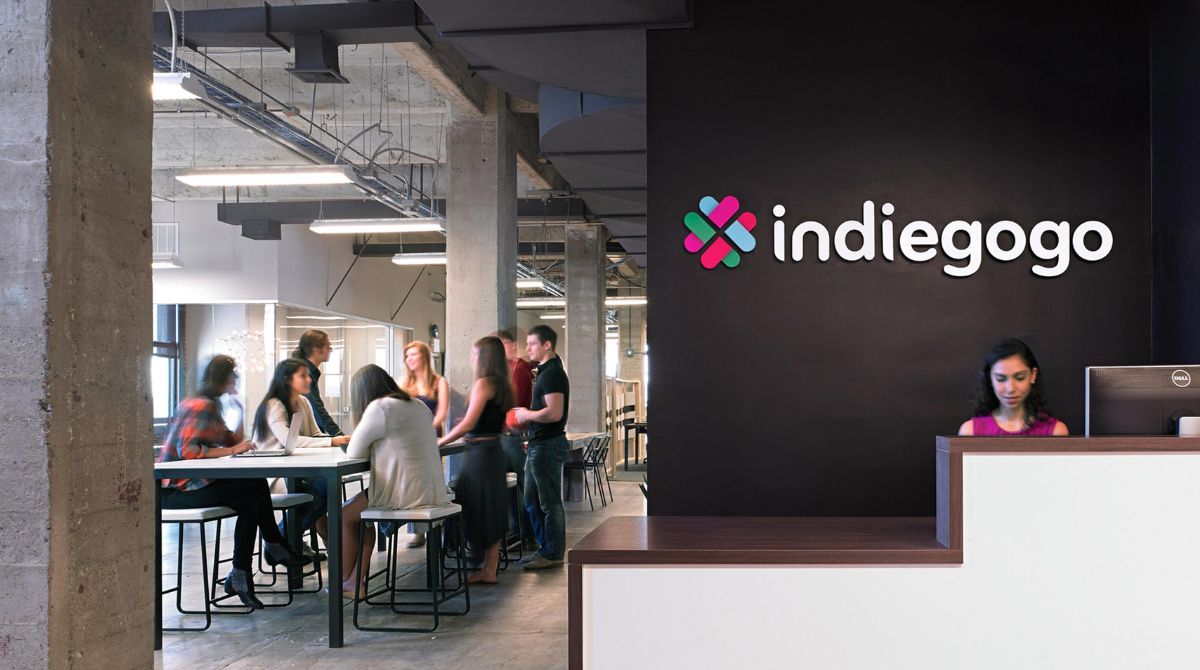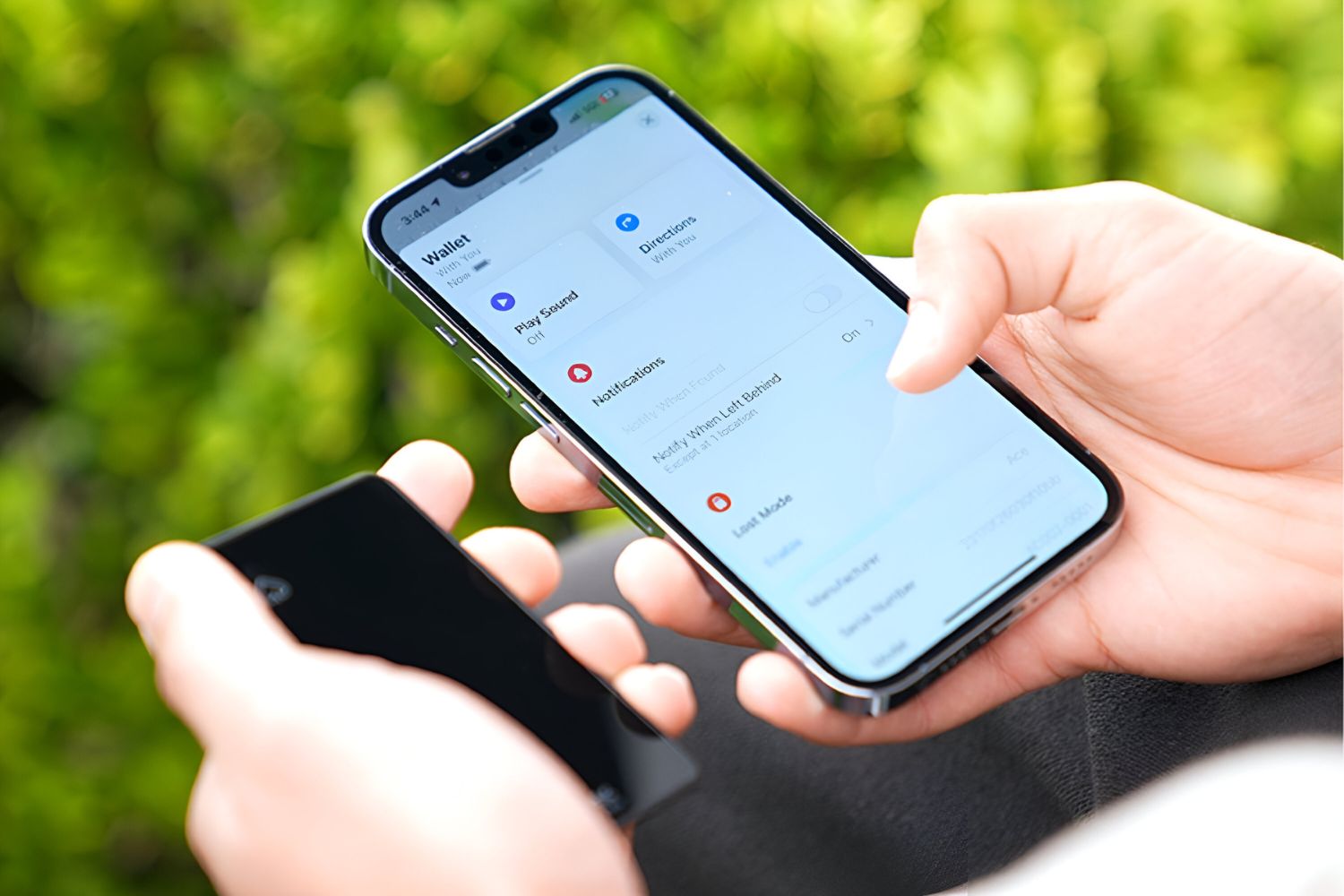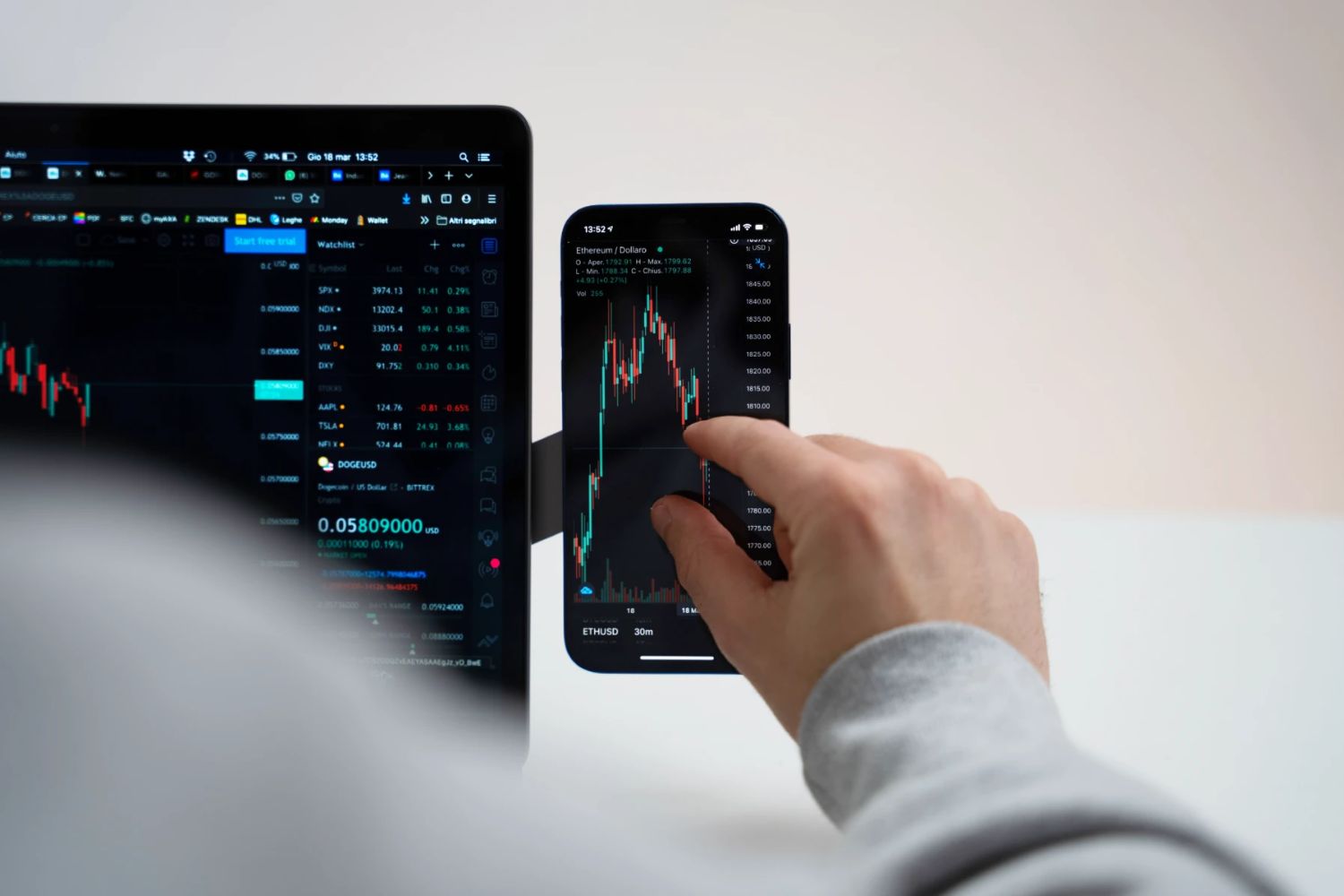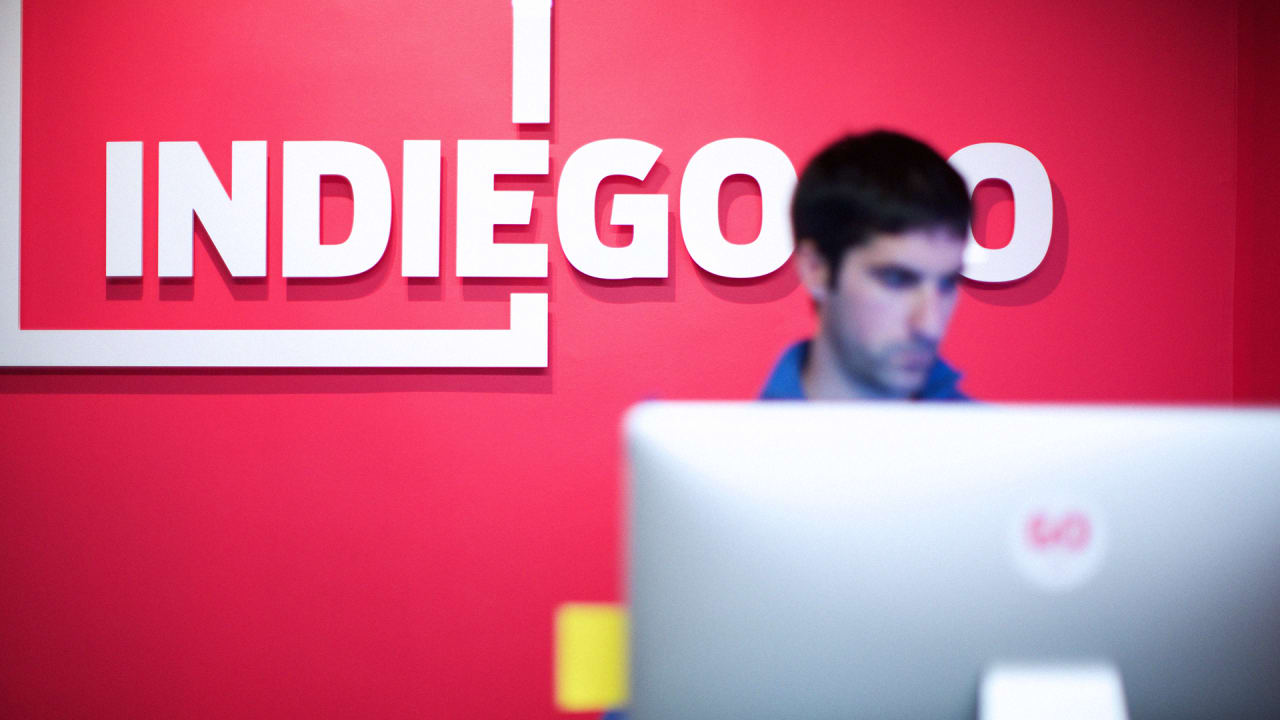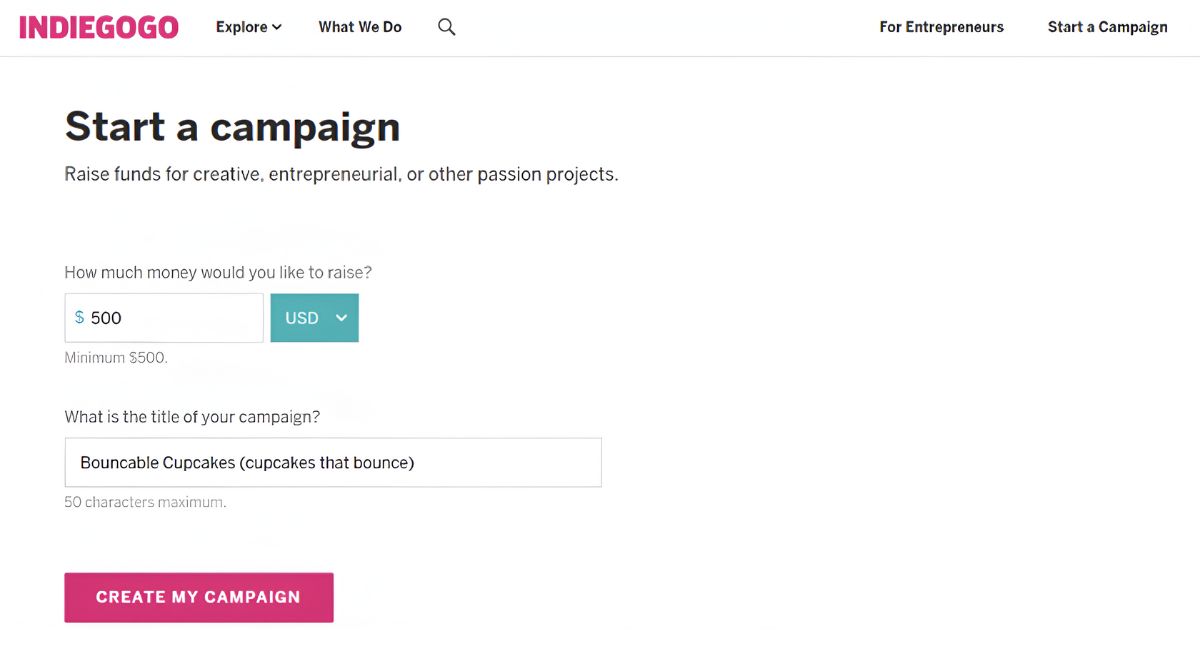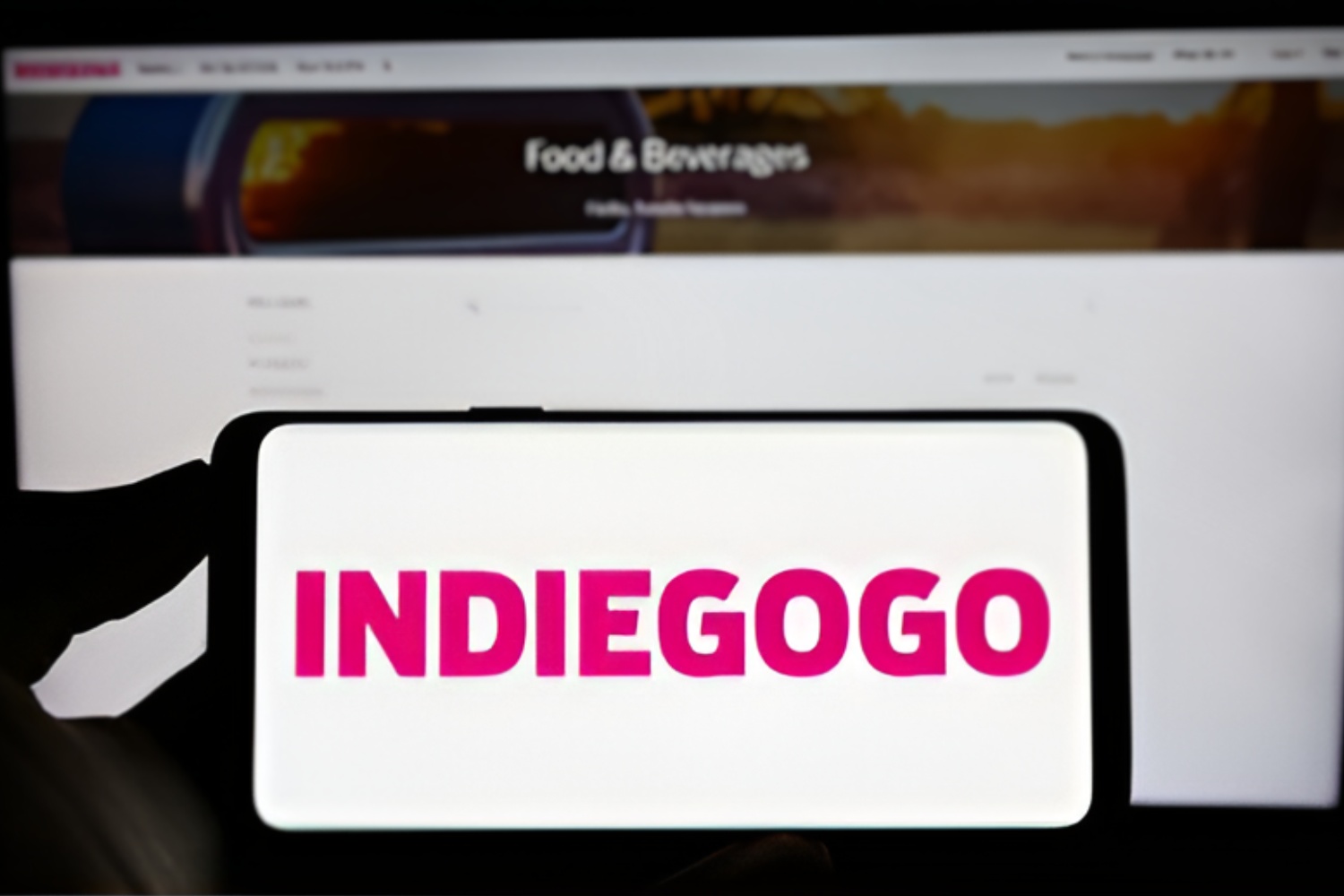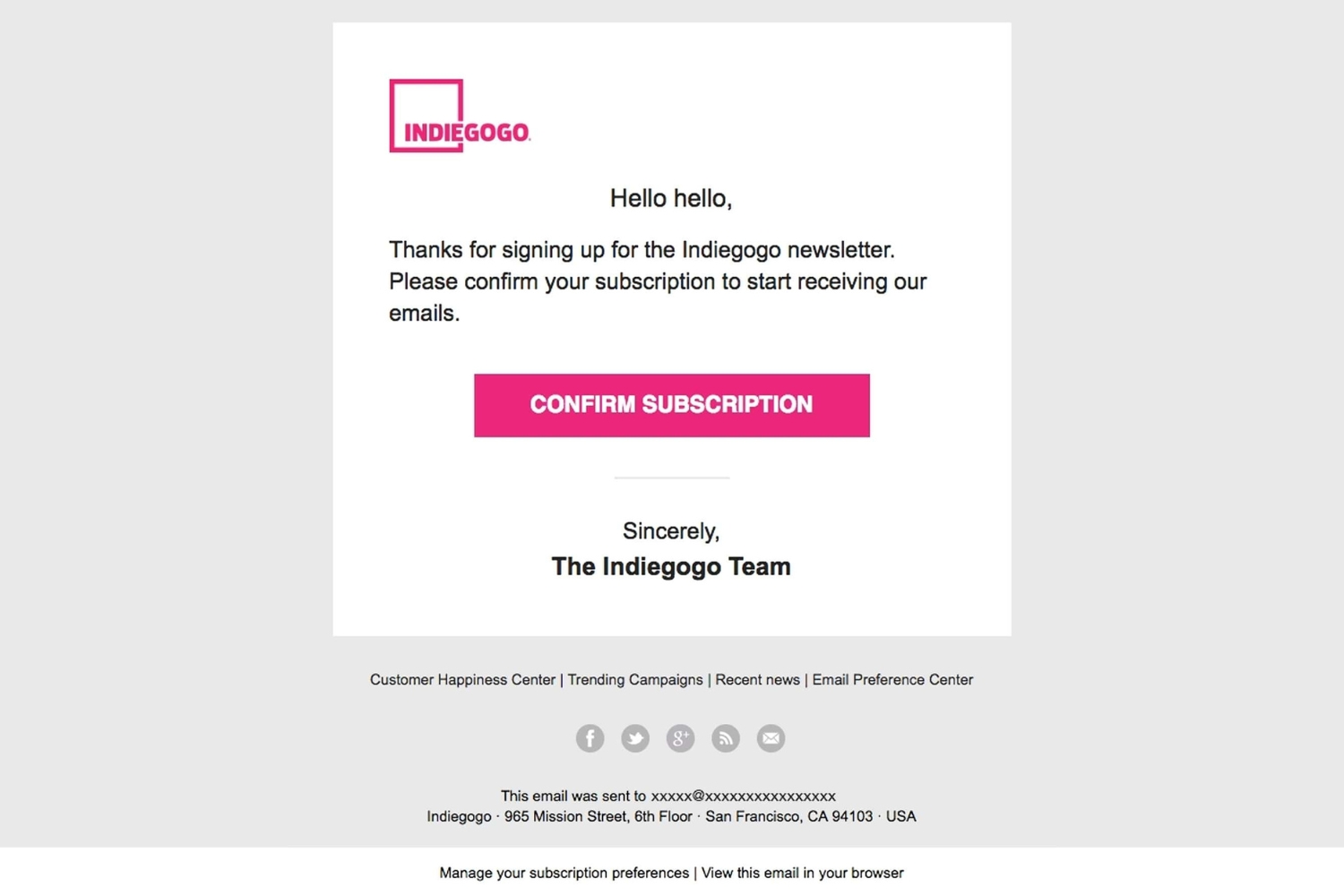Introduction
Launching a successful Indiegogo campaign requires careful planning and consideration, and one crucial aspect to determine is the duration of your campaign. How long should you run your Indiegogo campaign? This question has no one-size-fits-all answer, as the ideal campaign length can vary depending on various factors.
Indiegogo, as a crowdfunding platform, provides flexibility for campaign creators to choose and customize the duration of their campaigns. On average, campaigns on Indiegogo last between 30 to 60 days, but it is important to analyze the specific needs and goals of your project to determine the most optimal timeframe.
Factors such as the nature of your project, the funding goal, and your target audience can all influence the ideal length for your Indiegogo campaign. Shorter campaigns may be more suitable for projects with a clear and urgent need for funding, whereas longer campaigns may be necessary for larger-scale initiatives or projects targeted towards a specific niche or community.
In this article, we will explore the different factors to consider when deciding on the duration of your Indiegogo campaign. We will also delve into the advantages and disadvantages of short, medium, and long campaign lengths, as well as provide essential tips for strategic planning, marketing, and promotion to ensure a successful crowdfunding experience.
Factors to Consider
When determining the duration of your Indiegogo campaign, several factors should be taken into account. Each campaign is unique, so it’s crucial to consider these factors and make an informed decision that aligns with your project’s specific needs and goals.
1. Nature of the Project: The type of project you’re seeking funding for plays a significant role in determining the ideal campaign length. If your project is time-sensitive or has a sense of urgency, a shorter campaign may be appropriate. However, if your project requires more time to build awareness and generate interest, a longer campaign might be more suitable.
2. Funding Goal: The amount of funding you’re seeking can also influence the duration of your campaign. If your funding goal is relatively small, a shorter campaign could create a sense of urgency and motivate backers to contribute quickly. On the other hand, larger funding goals might require a longer campaign period to allow for a more gradual accumulation of funds.
3. Target Audience: Understanding your target audience and their behavior is essential for determining campaign length. If your audience is active and engaged, a shorter campaign may be sufficient to generate the desired support. However, if your audience needs more time to become familiar with your project, a longer campaign could provide the opportunity to build trust and establish a stronger connection.
4. Competitive Landscape: It’s essential to assess the level of competition in your project’s category on Indiegogo. If there are many other campaigns similar to yours running simultaneously, a shorter campaign might be necessary to capture backers’ attention before they are drawn to other projects. Conversely, if your project stands out in a less competitive category, a longer campaign could allow for more exposure and potential backers to discover your campaign.
5. Resources and Availability: Consider the resources you have available to dedicate to your campaign, including time, marketing efforts, and team members. Longer campaigns often require more sustained efforts, including regular updates, engagement with backers, and ongoing promotion. If you have limited resources, a shorter campaign may be a more manageable option.
By carefully considering these factors and how they relate to your specific project, you can make an informed decision about the ideal duration of your Indiegogo campaign. Balance is key, as you want to create a sense of urgency and drive momentum, while also providing ample time for interested backers to discover and contribute to your project.
Short Campaigns
Short Indiegogo campaigns typically last around 30 days or less. These campaigns are characterized by a sense of urgency and prompt action from potential backers. Here are some advantages and considerations for running a short campaign:
Advantages:
- Create a sense of urgency: With a shorter campaign, you can generate excitement and motivate backers to take immediate action. Limited timeframes can encourage potential backers to contribute sooner, fearing they may miss out on supporting a time-sensitive project.
- Maintain momentum: Short campaigns can help maintain momentum throughout the fundraising process. With a concentrated timeframe, you can focus your marketing efforts and keep backers engaged without losing their interest over an extended period.
- Less resource-intensive: Short campaigns require fewer resources, including time, energy, and financial investment. You can dedicate your efforts to a concentrated period without stretching your resources too thin.
Considerations:
- Limited time for promotion: With a shorter campaign, there is less time available for marketing and promotion. It’s crucial to have a well-thought-out marketing strategy in place before launching your campaign to maximize its reach and effectiveness.
- Less time for audience engagement: Short campaigns may limit your ability to engage with your audience and build a strong relationship with potential backers. It’s important to prioritize regular updates and communication during the campaign to keep backers informed and connected.
- Challenging for larger funding goals: If your funding goal is significant, a short campaign may not provide enough time to accumulate the necessary funds. Consider the scope of your project and the time required to effectively reach your target funding.
In summary, short Indiegogo campaigns can be effective for creating a sense of urgency and maintaining momentum. However, they require careful planning and a well-executed marketing strategy to maximize their impact. It’s crucial to assess the nature of your project, audience preferences, and your available resources before deciding on a short campaign duration.
Medium Campaigns
Medium-length Indiegogo campaigns typically range from 30 to 60 days. These campaigns offer a balance between creating a sense of urgency and allowing enough time for marketing, promotion, and audience engagement. Here are some advantages and considerations for running a medium-length campaign:
Advantages:
- Ample time for audience engagement: Medium campaigns provide more time to engage with your audience, build relationships, and answer questions. This increased engagement can lead to higher levels of trust and increased support from potential backers.
- Flexibility for marketing and promotion: A longer campaign period allows for a more diverse and sustained marketing strategy. You can pace your promotions over time, experiment with different marketing channels, and reach a wider audience.
- Opportunity for gradual growth: With a medium-length campaign, you can steadily grow your backers and funding over time. This can be particularly beneficial for projects with larger funding goals or niche audiences that may require more time to discover and engage with your campaign.
Considerations:
- Can lead to complacency: The longer campaign duration can sometimes lead to complacency and a lack of urgency. It’s crucial to maintain momentum and keep backers engaged throughout the campaign by providing regular updates and incentives to encourage timely contributions.
- Potential for campaign fatigue: A medium-length campaign requires sustained marketing efforts, which can be challenging to maintain over an extended period. Careful planning is necessary to avoid repetition and keep your promotional messaging fresh and engaging.
- Balancing audience attention: Longer campaigns run the risk of competing for the attention of potential backers with other campaigns. It’s important to continually assess and refine your marketing strategy to stand out from the crowd and capture the interest of your target audience.
Overall, medium-length Indiegogo campaigns offer a good balance between creating urgency and allowing enough time for marketing and audience engagement. They are well-suited for projects that require a moderate level of promotion and audience building. Assess the specific needs of your project and weigh the advantages and considerations to determine if a medium-length campaign is the right choice for you.
Long Campaigns
Long Indiegogo campaigns typically last more than 60 days. These campaigns offer more time for marketing, promotion, and audience engagement, making them ideal for projects with specific niches or larger funding goals. Here are some advantages and considerations for running a long campaign:
Advantages:
- Extensive marketing and promotion opportunities: Long campaigns provide ample time to experiment with different marketing channels and strategies. You can explore various promotional activities, build relationships with influencers, and reach a broader audience over a sustained period.
- More time for audience engagement: With a longer campaign, you have the opportunity to engage with your audience consistently. By providing regular updates, answering questions, and nurturing relationships, you can build trust, credibility, and long-term support.
- Flexible funding goals: Longer campaigns can accommodate larger funding goals, allowing you to spread the funding target over an extended period. This provides more flexibility in reaching your target and can give potential backers a longer timeframe to contribute.
Considerations:
- Potential for campaign fatigue: Keeping backers engaged and interested throughout a long campaign can be a challenge. It’s important to plan a dynamic and evolving campaign strategy to avoid repetition and maintain excitement.
- Competing for attention: Running a long campaign means competing for attention with other projects on Indiegogo. It’s crucial to continually adapt your marketing efforts and find unique ways to stand out from the crowd and capture the interest of potential backers.
- Resource-intensive: Long campaigns require significant resources, including time, energy, and financial investment. It’s important to ensure you have the necessary resources and bandwidth to sustain momentum and consistently engage with your audience throughout the campaign period.
When considering a long Indiegogo campaign, carefully evaluate the feasibility based on your project’s unique needs and goals. Longer campaigns are beneficial for projects with specific niches, complex goals, or those that require more time to engage with their target audience. However, they require dedicated planning, continuous effort, and the ability to adapt and evolve your campaign strategy over time.
Strategic Planning
Strategic planning is essential for the success of your Indiegogo campaign. A well-thought-out strategy can help you determine the optimal duration for your campaign, attract the right audience, and maximize your chances of reaching your funding goal. Here are key factors to consider in your strategic planning:
1. Set Clear Goals: Define your campaign goals, including your funding target, and the specific outcomes you want to achieve. This clarity will help guide your campaign strategy and inform the overall duration of your campaign.
2. Research your Target Audience: Understand your target audience’s preferences, behaviors, and motivations. This information will guide the design of your campaign and help you determine the most effective duration for capturing their attention and support.
3. Develop a Compelling Story: Craft a compelling narrative around your project that engages and resonates with your audience. A well-told story can create emotional connection and inspire people to support your campaign.
4. Determine the Optimal Campaign Length: Consider the nature of your project, funding goal, and target audience to determine the best duration for your Indiegogo campaign. Assess the advantages and considerations of short, medium, or long campaigns and choose the option that aligns with your project’s needs.
5. Create a Detailed Timeline: Break down your campaign into actionable milestones and set a timeline for activities such as pre-launch preparations, campaign launch, marketing strategies, and engagement tactics. A detailed timeline will help you stay organized and on track throughout the campaign.
6. Plan your Marketing and Promotion Strategy: Determine the marketing channels and tactics you will use to reach and engage your target audience. This may include social media campaigns, email marketing, content creation, influencer partnerships, and more. Align your marketing efforts with the duration of your campaign to ensure consistent promotion throughout.
7. Build a Strong Support Network: Leverage your existing network and cultivate relationships with potential backers, influencers, and media outlets. Engage with them before and during the campaign to generate buzz and increase the chances of organic promotion.
8. Prepare for Contingencies: Anticipate challenges and have contingency plans in place. This may include adjusting the duration of your campaign, modifying marketing strategies, or exploring additional promotional opportunities to overcome obstacles and ensure campaign success.
Your strategic planning serves as the foundation for a successful Indiegogo campaign. By setting clear goals, understanding your audience, and creating a well-rounded strategy, you can increase your campaign’s visibility, attract the right backers, and maximize your chances of achieving your funding goal.
Marketing and Promotion
Effective marketing and promotion are essential for the success of your Indiegogo campaign. Implementing a well-rounded and targeted marketing strategy will help you reach a wider audience, generate interest in your project, and increase the chances of achieving your funding goal. Here are key strategies to consider:
1. Social Media Promotion: Utilize social media platforms like Facebook, Twitter, and Instagram to create buzz around your campaign. Share engaging content, behind-the-scenes updates, and compelling visuals to attract attention and encourage followers to share your campaign with their networks.
2. Email Marketing: Build an email list of interested individuals and potential backers. Send regular updates, exclusive content, and personalized messages to keep them engaged and informed about your campaign’s progress. Consider offering incentives, such as early-bird perks or limited-time discounts, to encourage contributions.
3. Content Creation: Develop high-quality content to showcase your project and build credibility. This may include engaging videos, informative blog posts, guest articles, or podcasts. Share this content on your campaign page, social media platforms, and relevant websites to attract attention and establish yourself as an authority in your field.
4. Influencer Partnerships: Collaborate with influencers, bloggers, or industry experts who align with your project’s niche. They can help amplify your message, provide endorsements, and reach their dedicated audience. Offer them exclusive access, special perks, or affiliate partnerships to incentivize their support.
5. PR and Media Outreach: Reach out to relevant media outlets, journalists, and bloggers to create awareness about your campaign. Craft a compelling press release and personalize your pitches to increase the likelihood of coverage. Highlight unique aspects of your project, key milestones, and any human-interest angles to capture media attention.
6. Community Engagement: Engage with online communities, forums, and groups that align with your project. Provide valuable insights, answer questions, and participate in discussions. However, be cautious not to spam or self-promote excessively. Instead, focus on building genuine relationships and contributing to the community.
7. Paid Advertising: Consider allocating a portion of your budget to targeted paid advertising. Platforms like Google Ads, Facebook Ads, or sponsored content on relevant websites can help you reach a wider audience and drive traffic to your campaign page. Monitor and optimize your ad campaigns to maximize their effectiveness.
8. Personalized Communication: Interact and engage with potential backers on a personal level. Respond promptly to messages and comments, show appreciation for contributions, and make backers feel valued. Building a strong connection with your audience can lead to increased support and word-of-mouth promotion.
Implementing a comprehensive marketing and promotion strategy is crucial for maximizing the reach and effectiveness of your Indiegogo campaign. By leveraging social media, email marketing, content creation, influencer partnerships, PR outreach, community engagement, paid advertising, and personalized communication, you can create buzz, attract backers, and increase the chances of achieving your funding goal.
Conclusion
Determining the duration of your Indiegogo campaign is a crucial decision that can greatly impact its success. Consider the nature of your project, funding goal, target audience, and available resources when choosing between short, medium, or long campaign lengths.
Short campaigns create a sense of urgency and maintain momentum but require careful planning and focused marketing efforts. Medium-length campaigns strike a balance between urgency and audience engagement, allowing for gradual growth and flexibility in marketing strategies. Long campaigns provide ample time for extensive marketing efforts and audience engagement but require sustained momentum and resource management.
Strategic planning is essential for a successful campaign. Set clear goals, research your target audience, develop a compelling story, and create a detailed timeline. Explore various marketing strategies, including social media promotion, email marketing, content creation, influencer partnerships, PR outreach, community engagement, paid advertising, and personalized communication.
Remember, every campaign is unique, so there is no one-size-fits-all answer. Assess your project’s specific needs and objectives to determine the ideal duration and implement a comprehensive marketing and promotion strategy that aligns with your goals.
By carefully considering these factors and implementing an effective strategy, you can maximize the visibility and potential of your Indiegogo campaign, attract the right backers, and work towards achieving your funding goal.







